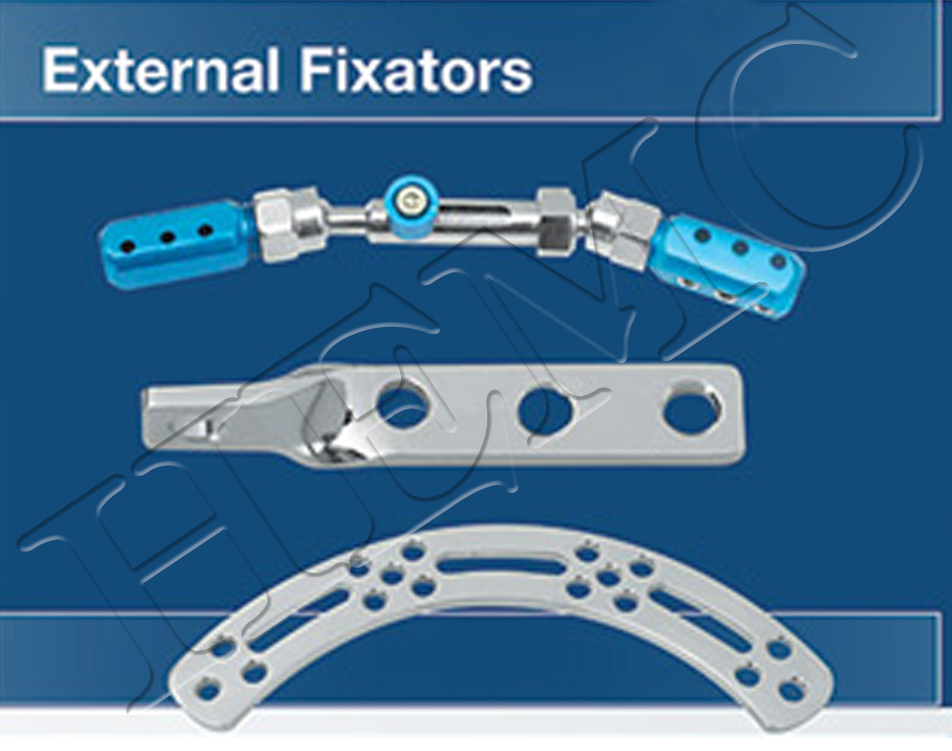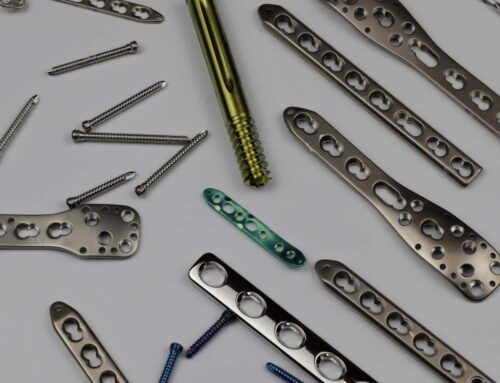 Orthopedic surgeons use external fixators to stabilize and repair external bone injuries. A main initial purpose of the external fixators is to fix and stabilize the bones in place. These fixators are also useful in stabilizing the soft tissues. In such a typical surgery procedure, the surgeon uses pins by inserting them into the injured bone. This helps in holding the bone tightly using the external frame of the fixator. Surgeons use external fixator devices only after careful observance of the patient’s bone repairing surgery requirements.
Orthopedic surgeons use external fixators to stabilize and repair external bone injuries. A main initial purpose of the external fixators is to fix and stabilize the bones in place. These fixators are also useful in stabilizing the soft tissues. In such a typical surgery procedure, the surgeon uses pins by inserting them into the injured bone. This helps in holding the bone tightly using the external frame of the fixator. Surgeons use external fixator devices only after careful observance of the patient’s bone repairing surgery requirements.
Use of external fixators
There are many instances when surgeons opt for external fixators. General use of the fixators is to fix open bone fractures as part of temporary solutions.
External fixators are highly useful for lengthening of the limbs. Those who have short limbs such as short legs can depend on these fixators. Similarly, many people suffer from a surgery that cuts their thigh bone diagonally. They can lengthen the limb using the option of external fixators surgery. Another use of these fixators is for reshaping of bones. This means that badly shaped bones can be brought to the proper shape.
When lengthening of the limbs is the case, the surgeon pins or wires on each side of the limb using external fixators. The surgeon then uses external metal apparatus to increase the distance between the two bones slowly.
But the uses of external fixators are many. Here are some of the uses of these orthopedic implants & Instruments in India.
- Open fracture having sever soft tissue disruption
- Unstable fractures
- Limb lengthening
- Infection or nonunion related fractured
- Stabilization of soft tissue
- Pediatric fractures
- Stabilization of open fractures
- Pelvic ring disruptions
- Correction of misalignment of bones
- Correction of length discrepancies
The surgery procedure
To repair and stabilize the injured bones, the surgeon first makes an insertion into the skin. The insertion is kept small. After the insertion penetrates up to the muscle, the surgeon inserts metal pins and screws. Then a bar is fixed outside of the skin and the pins are attached to it. For tightly securing the bone in place, the surgeon generally uses rods, pins, plates, and screws.
The surgeon digs some holes around the skin area which is not affected by the bone injury. This area is however, closer to the bone injury. Then, the surgeon inserts some special bolts and wires into the hole. The bolts are jointed to the outside part of the body area. To do so, the surgeon uses a curved metal piece or a rod. To support the frame, special ball and socket joints are used. The surgeon takes extra care that the bolts are thoroughly cleaned in a proper way. The surgery procedure is performed under general anesthesia.
Most of the bone fracture injuries take time to heal. Some of these injuries may even take many months before complete healing of the wounds. However, average healing time for many factures is 6 to 12 weeks. Only some complicated fractures takes more time to fully heal. The patient is advised to take extra precaution during the healing process.
Global quality parameters followed
External fixator manufacturers in India such as HEMC Ortho follow global quality parameters during the manufacturing process at every phase. Strict quality checking at every stage of manufacturing makes it sure that the surgeons get only high quality standards of these screws.



Leave A Comment